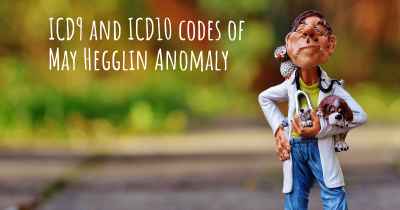What is the history of May Hegglin Anomaly?
When was May Hegglin Anomaly discovered? What is the story of this discovery? Was it coincidence or not?

May-Hegglin Anomaly (MHA) is a rare genetic disorder that affects the blood and platelets. It was first described in 1945 by two hematologists, Margaret May and Carl Hegglin. MHA is characterized by the presence of large platelets, abnormalities in white blood cells, and a predisposition to bleeding disorders.
The discovery of MHA was a result of extensive research and observation by May and Hegglin. They noticed unusual features in the blood samples of several patients, including enlarged platelets and abnormal granules in white blood cells. These observations led them to investigate further and eventually identify a distinct disorder, which came to be known as May-Hegglin Anomaly.
Genetic studies conducted in subsequent years revealed that MHA is an inherited disorder caused by mutations in the MYH9 gene. The MYH9 gene provides instructions for making a protein called non-muscle myosin heavy chain IIA, which is essential for the normal functioning of platelets and white blood cells. Mutations in this gene disrupt the structure and function of these cells, leading to the characteristic features of MHA.
Signs and symptoms of MHA can vary widely among affected individuals. Some individuals may have no symptoms at all, while others may experience mild to severe bleeding disorders. Common symptoms include easy bruising, nosebleeds, heavy menstrual bleeding, and prolonged bleeding after injury or surgery. In some cases, individuals may also develop kidney problems, hearing loss, or high blood pressure.
Diagnosis of MHA typically involves a thorough physical examination, evaluation of medical history, and laboratory tests. Blood tests can reveal the presence of large platelets and abnormal granules in white blood cells. Genetic testing can confirm the diagnosis by identifying mutations in the MYH9 gene.
Treatment for MHA is primarily focused on managing the symptoms and preventing complications. This may involve regular monitoring of blood counts, platelet transfusions in case of severe bleeding, and medications to control high blood pressure or kidney problems. It is important for individuals with MHA to avoid medications that can further impair platelet function, such as aspirin or nonsteroidal anti-inflammatory drugs.
Prognosis for individuals with MHA is generally favorable, and most people can lead normal lives with appropriate management and care. However, the severity of symptoms can vary, and some individuals may experience more significant bleeding or complications. Regular follow-up with healthcare professionals is essential to monitor the condition and adjust treatment as needed.
Research into May-Hegglin Anomaly is ongoing, with a focus on understanding the underlying genetic mechanisms and developing targeted therapies. Advances in genetic testing and molecular techniques have improved the accuracy of diagnosis and allowed for better management of the disorder.
In conclusion, May-Hegglin Anomaly is a rare genetic disorder characterized by abnormalities in platelets and white blood cells. It was first described by Margaret May and Carl Hegglin in 1945. Genetic studies have since identified mutations in the MYH9 gene as the cause of MHA. Diagnosis involves physical examination, medical history evaluation, and laboratory tests. Treatment aims to manage symptoms and prevent complications. Prognosis is generally favorable, but regular monitoring and care are necessary. Ongoing research continues to enhance our understanding of MHA and improve diagnostic and therapeutic approaches.








